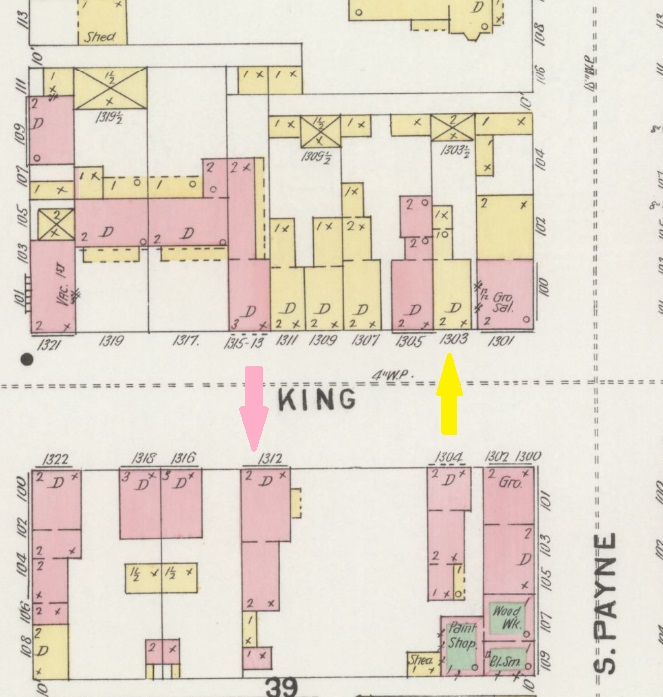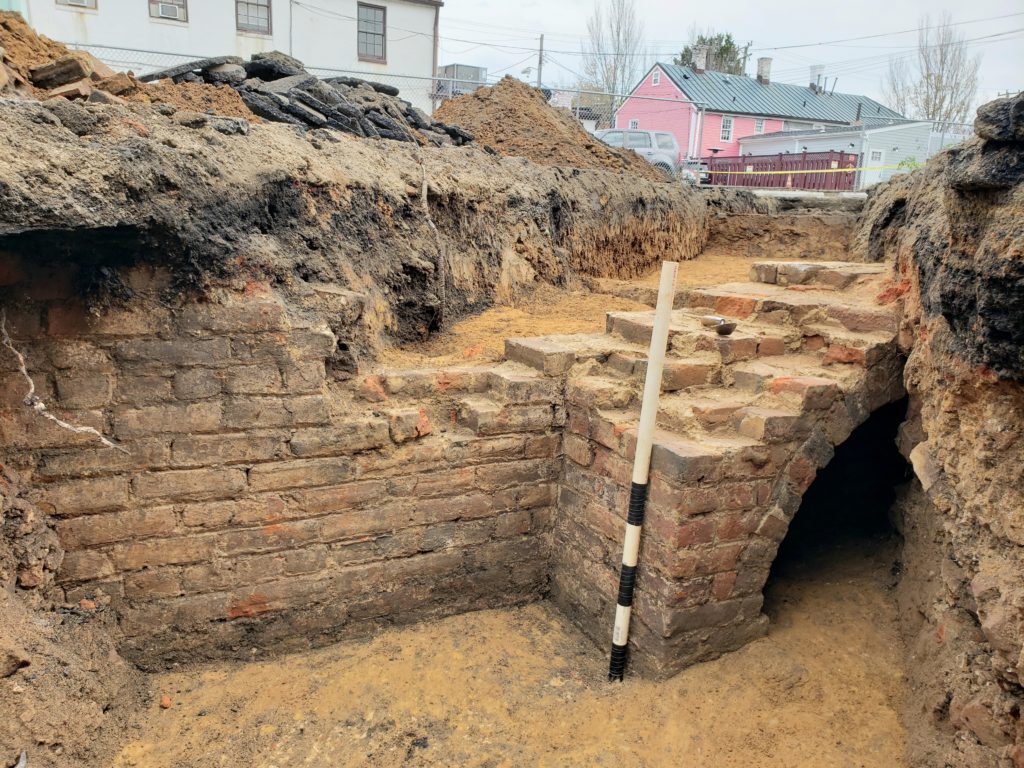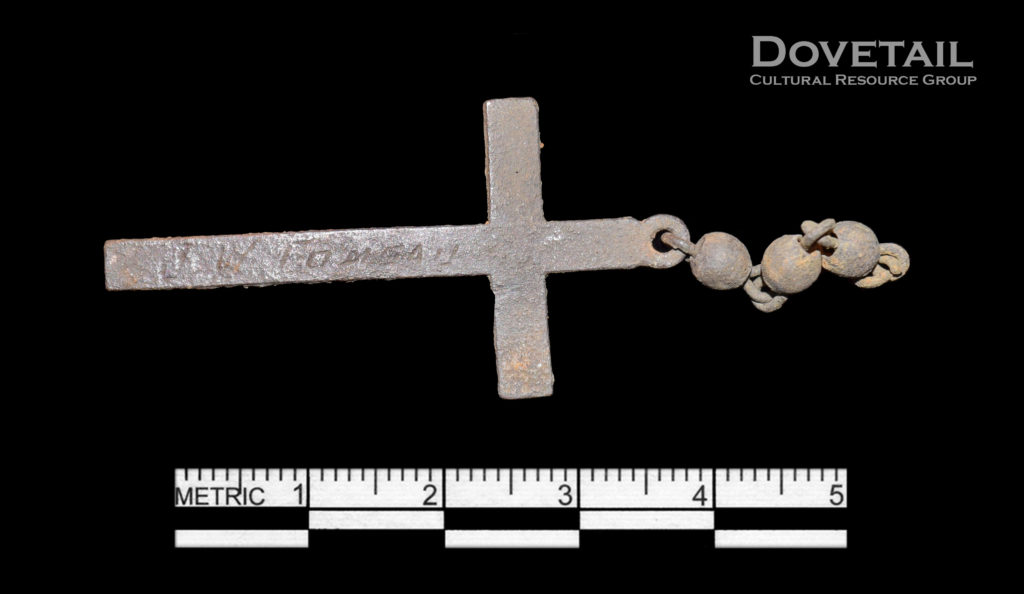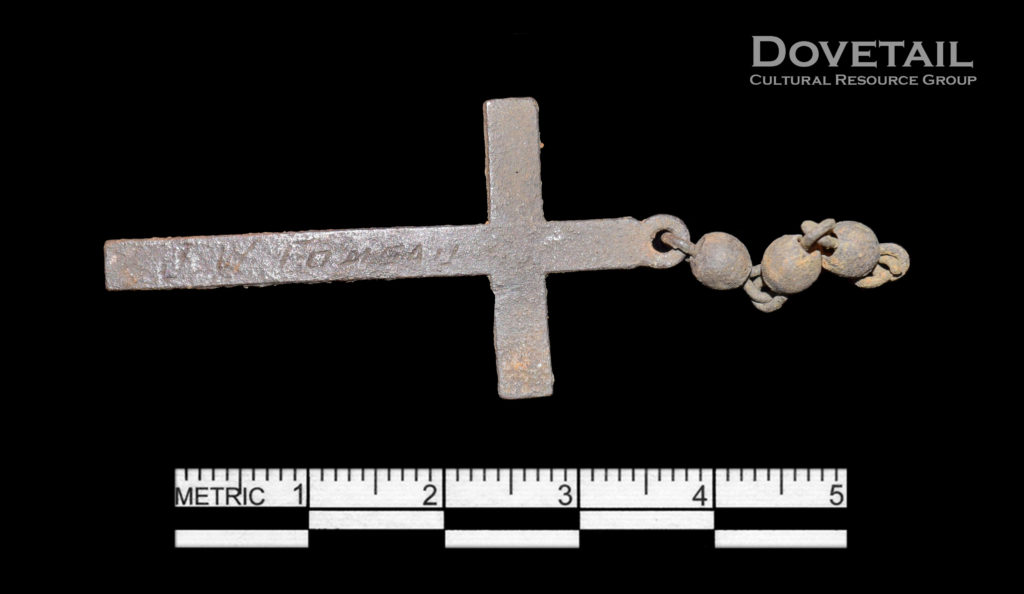By: Kerry S. González
In recent excavations in the City of Alexandria, Dovetail recovered a portion of a rosary, specifically the crucifix and a section of the antiphon. Rosaries are used in Catholicism as a form of meditative prayer, and each rosary contains three parts: the introduction or the antiphon, the five decades, and the conclusion. The introduction consists of the cross and the four beads following it, which represent the Apostles’ Creed, one Our Father, and three Hail Marys for the three divine virtues of Faith, Hope, and Charity. The next part are the five decades (10 Hail Marys said in a row), and the conclusion is the closing prayers. This artifact was found within the rubble fill of a basement, all that remains of a dwelling located at 1312 King Street.
The home itself, according to historic maps, was a two-story brick building (Figure 1). Dovetail’s recent excavations confirmed the presence of this building, which was constructed in what is known as a common bond. Additional information on the building was also obtained from the dig, such as the basement was white whitewashed, it had divided rooms, a French drain helped shed water, and a relieving arch likely held the weight of brick chimney above (Photo 1). While the architecture of the building at 1312 King Street isn’t the focus of this blog, a picture helps visualize the home and its occupants.

Figure 1: 1896 Sanborn Map Overlay (Sanborn Map Company 1891). Pink indicates brick building and yellow indicates wooden frame.

Photo 1: Partially Exposed Foundation Wall and Relieving Arch Associated with 1312 King Street.
The rosary pictured here has the name J.W. Comeau inscribed on the back (Photo 2). Initially it was assumed that Comeau must have resided at 1312 King Street for the rosary to have been deposited within the basement fill, but research on Mr. Comeau suggests that he actually lived across the street. A newspaper ad from 1919 infers that he lived at 1303 King Street, now part of Pacers Running, and was offering his services for painting and papering (Figure 2). He possibly worked at the Paint Shop located at 1304 King Street (see Figure 1).


Figure 2: 1919 Advertisement (Alexandria Gazette 1919).
While this artifact tells us little about the occupants of the site investigated by Dovetail, it nonetheless provides a link to the residents of the block as well as the City of Alexandria during the early-twentieth century. It also tells us how fill and artifacts in urban contexts often end up away from their original location. Not only is this artifact a good example of how cities have always, and continue to, change through cutting and filling episodes, it is tangible pieces such as this section of a rosary that make what we do as archaeologists and historians exciting.
Any distributions of blog content, including text or images, should reference this blog in full citation. Data contained herein is the property of Dovetail Cultural Resource Group and its affiliates.
References:
Alexandria Gazette
1919 “Painting and Papering” https://virginiachronicle.com/?a=d&d=AG19191202.1.5&e=——-en-20–1–txt-txIN——–, accessed November 2020.
Sanborn Map Company
1891 Sanborn Fire Insurance Maps from Alexandria, Independent Cities, Virginia. Sanborn Map Company, Aug, 1891. Map. https://www.loc.gov/item/sanborn08968_003/.

